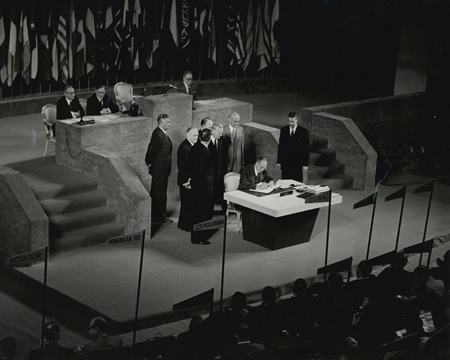
Kimie Hara, Renison Research Professor in East Asian Studies, University of Waterloo.
The Treaty of Peace with Japan, commonly known as the San Francisco Peace Treaty, was signed on September 8, 1951 in San Francisco, and came into force on April 28, 1952. This post-World War II settlement with Japan, prepared and signed against the backdrop of the intensifying Cold War, fell far short of settling outstanding issues at the end of the war or facilitating a clean start for the “postwar” period in East Asia. Rather, various aspects of the settlement were left equivocal. The peace treaty, which largely determined Japan’s position in the post-war world, along with the US-Japan security treaty signed on the same day, left negative legacies of “unresolved problems,” and continue to significantly affect regional international political and security relations. Today, the countries and peoples of East Asia are still deeply divided by history, politics, and unsettled borders, even though they have become much closer in their economic, cultural, and other relations. Taking the “San Francisco System” as its conceptual grounding, this presentation traces origins and developments of these regional conflicts in the context of the post-World War international order and its transformation in East Asia. In light of their multilateral origins, particularly the unresolved territorial problems involving Japan and its neighbors, it explores ideas for multilateral settlements that could lead the region toward reconciliation through greater regional cooperation and community building.
Friday, February 5, 2016
12:00pm to 1:30pm
Room 241, Rosenkranz Hall
115 Prospect Street


